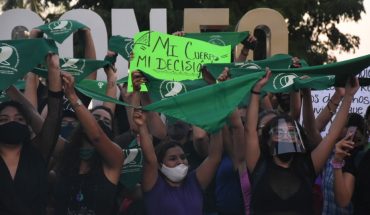
In 2019 the iconic discotheque gay Fausto turned 40 years old, thus becoming the oldest in Chile that still manages to keep it running. How did a homosexual den open in the toughest years of the Chilean civic-military dictatorship, it remains throughout that period, remaining operational even to today?
That was the premise of the research that was raised the Collective of Performing Arts La Comuna (Petra, domestic spaces of domination) to create The rhythm of the night, bold staging that premiere selves on March 26 in the Agustín Siré Hall of the University of Chile.” The history of homosexuality in Chile does not start with the Movilh or Pablo Simonetti in the Fundación Iguales, it begins much earlier with people who were resisting, not from a partisan politics, but from a physical resistance to resisting loving, dancing, reeling, having a drink and not dying for it,” emphasizes Diego Agurto, its director.
Collective exercise in research and creation
Through a collective research and creation exercise, the members of the company began to collect archival and audiovisual material from the time, in addition to conducting a series of interviews, which were transcribed verbatim by the member who did not would have participated in the conversation. Then a methodology was established where the recurring themes, places and characters were distinguished and they made a second sweep of encounters among which stand out the testimonies of a transformer of the time, a homosexual biable, the lover of an agent CNI.
“Through testimonies of people who lived this stage between 1979 and 1996, the year when the media raid was made to the discotheque Quásar just because it was a gay record, we began to know what the homosexual night was like during the dictatorship: curiously there was a greater number of places that today in “democracy” located in more popular places, different ways of socialization and strategies of protection and resistance anchored in the body, desire, community and party. Likewise, as a Collective, we were able to understand that Fausto, the only album located in a well-to-do sector of the city, was a place protected by the dictatorship in the sense of not being constantly besieged by Carabineros as senators, diplomats and people linked to the armed forces and television,” adds Carlos Briones, co-director of the play.
The result is a representation based on reality, which brings different testimonial material so that each actor fleshes certain cross-cutting themes of the time, such as sexual practices, repression, male domination, among others; crossing with the night and the show – so present then – through TV slogans, song fragments and a visuality inspired by the aesthetics of the moment.
“For us it is super important to make visible the stories that do not enter the official history, the one told by the heterosexual male story, that is, the story of marginalized minorities, which does not appear in the repair reports, which are not in the Report Valech or the Rettig Report… Tell the audience what happened to all those stories that aren’t part of History and what we do with them. Today that we are discussing policies and rights for the LGTBQ population, gender identity, feminism and heteropatriarchy, it is important to know how we contribute to that discussion in a critical way that generates reflection on how we have built our cultural, social and affective stories.”, concludes Diego Agurto.
Coordinates
Premiere March 26 at 20 a.m.
Season: March 27 and 28; 2, 3 and 4 April 20 h
Thursday to Saturday, 8 p.m.
Agustín Siré Room
$4,000 Gral., $2,000 students and seniors
Artistic data sheet
Dramaturgy: Collective The Commune based on testimonial stories
Address: Diego Agurto Beroiza and Carlos Briones
Cast: Mario Alvarez, Pablo Rojas, Manuel Díaz, Fabian Gómez, Ariel Lagos and Santiago Rodríguez
Choreography: Fabián Gómez
Production: Barbara Donoso
Comprehensive design: Loreto Martínez
Sound design: Camilo Plaza
Audiovisual producer: Wincy Oyarce
Theoretical agitation: Jorge Diaz
Photograph: Diego Argote and Pablo Fattori
Press: Claudia Palominos





